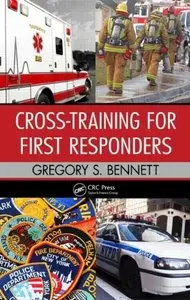Cross-Training for First Responders by Gregory Bennett
English | 2010 | ISBN: 1439826536 | 283 Pages | PDF | 3,3 MB
English | 2010 | ISBN: 1439826536 | 283 Pages | PDF | 3,3 MB
The tragedy that occurred in the United States on September 11, 2001 brought enhanced emergency preparedness among first responders to the forefront of public awareness. Since those events — and despite significant progress made in many of the areas previously deemed deficient — some response areas are still woefully inadequate. Cross-Training for First Responders highlights these weaknesses that, in many cases, still remain in the response community. The book presents concrete solutions that arm first responders with vital knowledge so that they are better prepared in the event of another major incident.
Innovative training
The author demonstrates that the best way responders can prepare for, react to, and mitigate an incident is to require them to train outside their traditional responsibilities — thereby developing an understanding of other first responder agencies’ terms, methods, and operational procedures. Despite this enhanced situational training, communication gaps can occur during cross-response and across regions. The book explains the kind of training required to prevent a lack of situational awareness by those thrust into unfamiliar territory during crisis events or mass disasters. Other topics include ways to curtail the inherent tensions that arise between voluntary and career responders, how to turn conflicts between various responding agencies into collaboration, innovative training strategies, grant opportunities to pay for training and equipment, and the rising trend of on-line training courses.
Testing readiness before an incident occurs
Finally, the book covers mechanisms for testing first responders’ ability to apply their new cross-training techniques, demonstrates how to plan and conduct a "tabletop" drill, and explains how to review the drill results to determine the areas in which participants are still deficient.
By identifying problem areas and offering concrete solutions, this book enables first responders to harness every possible advantage so that they are prepared and ready to confront the next crisis, no matter where it may strike.



